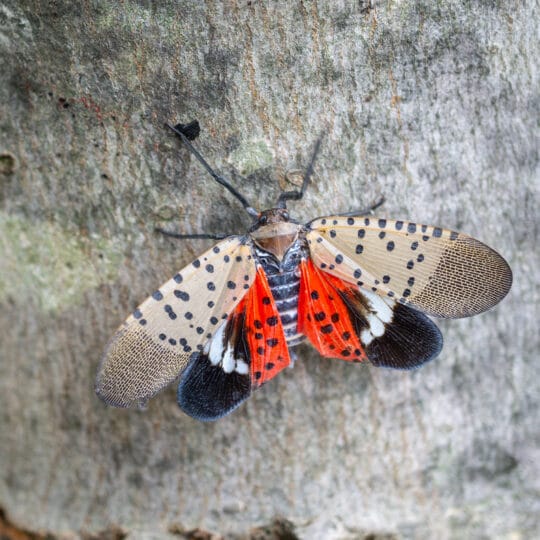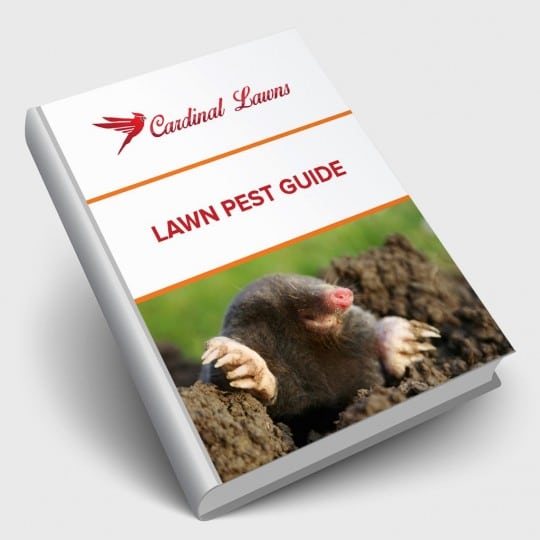Spotted Lanternflies are Back
What You Should Do
Posted
June 11, 2020

Have you spotted the spotted lanternfly yet? Last year was a doozy of destruction with these pests infesting trees and carcasses covering sidewalks. There are some things you can do now to help stop the spread before they take over again this year.
Signs of the Spotted Lanternfly
If you haven’t seen them already, the spotted lanternfly adult is about an inch long and grey with black spots. The back wings have patches of red and black. You may see them swarm around a tree with smooth bark and notice their egg sacks on other smooth surfaces, like siding, outdoor furniture, and even your car. The sacks look like patches of dry mud and could contain up to 50 eggs each. This is why it’s imperative to get rid of the eggs before they hatch.
Another sign of lanternflies is the sooty mold that forms from the honeydew the flies excrete. You may also see more bees or wasps in the area because of the sweet substance.
Spotted Lanternfly Damage
Lanternflies cause widespread damage in the following areas:
- Trees. They cover bark with egg masses and feed on the sap. While they prefer fruit and nut trees they can attack others, leaving leaves to curl, wilt, and die.
- Sap. When they feed, lanternflies excrete a sugary honeydew substance. This can lead to black mold spreading to other plants.
- Agriculture. Those in the fruit and hardwood industry are greatly impacted by these pests who prefer these types of plants.
- Outdoor activity. No one wants to play in the middle of a lanternfly swarm, especially when decks, patios, and playgrounds are covered in sticky honeydew.
What Should You Do?
While you may see your neighbors squashing the bugs, there’s a way to get ahead of it. When you see the dried egg mass on the underside of tree branches, the bottom of the trunk, under planters and decking, and smooth sides of buildings, scrape it off into a container with rubbing alcohol. Use a putty knife, credit card, or another blunt tool to remove the mud-like mass or just smash it where it is.
Lanternfly Prevention
The best way to prevent a massive infestation in your yard is to be vigilant. Look around your house and yard and remove any signs of eggs you see. Even though females lay eggs in the fall, they can survive the winter and start to hatch as soon as it’s warm enough.
If you live in an infected area, inspect your car and any other outdoor object you are likely to move in order to prevent the possible spread of eggs.
There are certain treatments to help reduce the likelihood of spotted lanternfly killing trees, but more severe cases will need ongoing application.
Some state authorities ask that you contact them to report signs of lanternflies. Certain areas also have specific restrictions and quarantine guidelines to follow. Check with your local government to find out more, and help do your part to stamp out this invasive pest.

Download Your FREE Lawn Pest Guide
Pests become most prevalent during the heat and humidity of summer. Take some time to learn about the signs of infestations before any damage can be caused to your landscape. This handy guide will teach you how to spot common lawn pests and how to keep them from causing harm to you and your property.